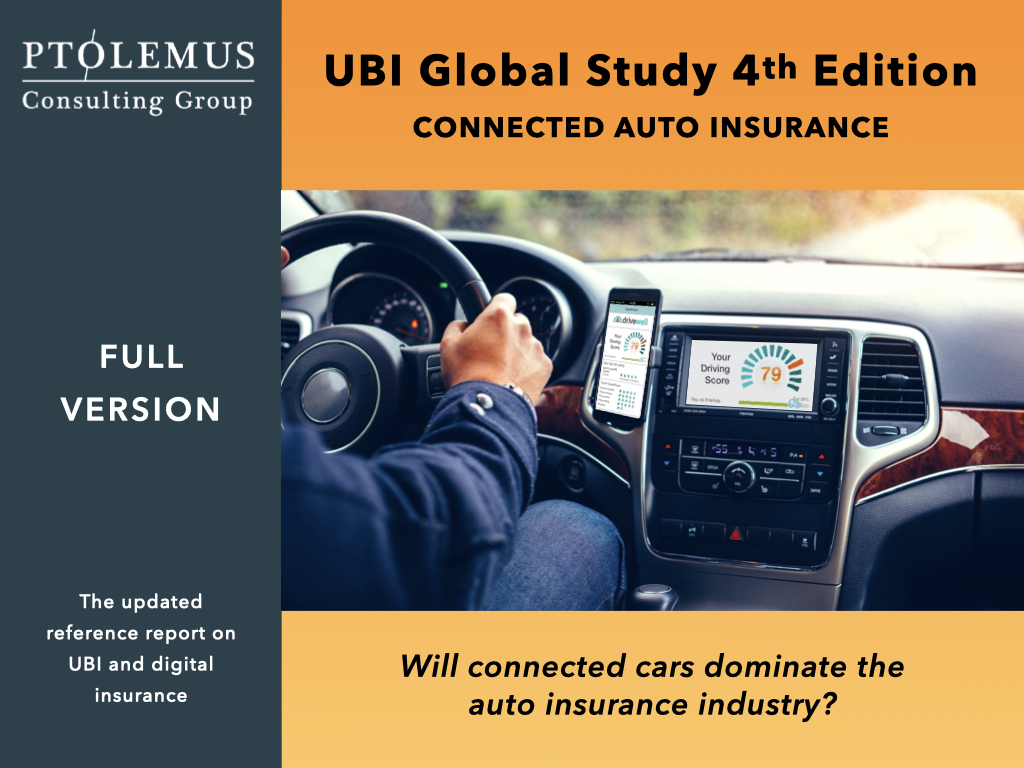The why’s and where’s of PAYD
Managing Director Frédéric Bruneteau outlines the current state of the insurance telematics market and discusses the new PAYD model in his more recent interview with M2M Apps.
M2M APPS: Could you start by outlining your consultancy activities and explain why you decided to call the company PTOLEMUS?
FREDERIC BRUNETEAU: I’ll start with the name. Ptolemus’s geographic work, conducted in the 3rd century, allowed maps of different continents to be assembled into the first global map. In the 21st century PTOLEMUS helps its clients assemble different M2M components to get another bigger picture: an end-to-end solution. Maybe the analogy is a bit contrived but we like it! Back to the present. We’re a consultancy that’s entirely focused on telematics and location-based services. I founded the company and we have offices in Brussels, Paris, Munich, Milan and Boston. We also work with telematics specialists around the world, which enables us to address global mobility issues.
M2M APPS: When and why did you decide to focus exclusively on telematics and location-based services?
FREDERIC BRUNETEAU: Three years ago we could foresee the emergence of a sweet spot. The cost of M2M hardware and wireless connectivity was falling and when it reached a critical point, we expected to see some amazing solutions coming to the market. That’s happened. But we also realized that innovation could transform established industries. For example, it is currently happening in the auto insurance market, where telematics is changing the rules of the game. That is why we started to focus on this business.
M2M APPS: What was the result?
FREDERIC BRUNETEAU: We spent two years researching this market and have produced a 400-page report, for which there is a free 60-page abstract. The European market for motor insurance is the largest in the world and it’s worth around €125 B, but almost €100 B is paid out in claims and for many insurers the business is only marginally profitable. Instead of putting policy prices up, which is a sledge hammer approach, the industry clearly needs to break the simplistic model on which risks are based. For example, not all young drivers are dangerous drivers. Pay As You Drive (PAYD) solutions based on telematics and individual, real-time driving behavior are the way ahead. On a global basis, there are almost 2.5 million PAYD customers, so this is clearly a market with a huge, largely untapped potential. Our research indicates that it should rise to 100 million by 2020.
M2M APPS: How does the PAYD model work?
FREDERIC BRUNETEAU: PAYD is simple but not simplistic. The more you drive the more you pay, but it can also factor the area, time of day, and adherence to speed limits. Telematics can include parameters like how hard drivers brake, how fast they accelerate, how hard they take corners and so on. That kind of data is particularly relevant for cars that are leased. Some people think that sounds like Big Brother. If so they can go on paying a high premium. But others, and they will be in the majority when the benefits are fully understood, will vote with their wallet. Our research has indicated that PAYD will attract and retain the lowest risk drivers and that they will receive discounts of up to 50% on their premiums. Moreover, establishing who is a low-risk driver can be done in a couple of months. Right now drivers have to have a clean driving sheet for many years before they get a substantial discount. High-risk drivers will continue to buy traditional, expensive policies. The former category is win:win: the latter is lose: lose. Basically PAYD is a smart, much fairer way of paying for motor insurance and a great way to promote safer driving habits.
M2M APPS: The report also indicates a change in the business relationship. Can you expand on that?
FREDERIC BRUNETEAU: Yes, the PAYD model does change the relationship between the insurance company and its clients. Right now it’s limited to payments and claims, which in the case of whiplash is often contested. That issue goes away when there is a telematics solution since “g” forces are measured. But what is really interesting is the fact that insurers can use the data generated in order to influence driving behavior, for example, indicate to drivers that if they continue to drive badly then there is an increased risk of having an accident and then the premium will increase. Insurers can also take good behavior on board and use the data to offer customers a better deal. Being proactive helps establish meaningful, individual relationships and in turn that reduces churn. The percentage of Europeans who have tried to switch their provider in the last two years is very high: 25%. This figure is higher than that of ISPs (22%) and mobile telephony (19%). The figure for home insurance is much lower: 15%. The boxer Mike Tyson once said that: “Everybody has a plan until they get punched in the face.” That is what the market is doing to the industry.
M2M APPS: The benefits of PAYD would seem to be self-evident. Why then has the take up been so slow and low?
FREDERIC BRUNETEAU: Insurance is a conservative industry and the motor risk-rating model was established decades ago, so there is a natural reluctance to change but change they must. It’s coming to the industry, albeit slowly; legislation would help, but that takes time. The biggest impact looks set to come from the equivalent of Internet startups that smash the mold: the online insurance equivalent to Amazon. In the UK, innovative business models are on offer from Wunelli and Insurethebox. The latter has partnered with various high street brand names, the former with established insurance companies like Allianz. A nice Internet type feature of PAYD is the ability to employ a Web portal or personal dashboard as it’s also called. This allows drivers to keep track of their mileage, see how they can earn additional miles that are added to the original driving allowance, and also increase their mileage quota on line.
M2M APPS: Your report shows a wide difference in geographic take up, with the UK, Italy and France in the lead and the other European countries trailing. Can you explain?
FREDERIC BRUNETEAU: We can talk about the European insurance market but of course it is made up from different countries that have different legislation and traditions. That’s particularly clear right now, but the fast increasing PAYD take-up in the UK, for example, reflects the exorbitant premiums charged for young drivers, particularly male drivers. Italy has well known fraud and theft issues, but it also a large number of low-mileage, second-hand cars. In our view, all countries will adopt the new model but it will take more time in the low premium and low churn markets.
M2M APPS: Would it be correct to say that we’ve reached an inflection point?
FREDERIC BRUNETEAU: We have but it varies by country. It’s true for Italy, the UK and the US. That said, it took 15 years to reach today’s figure of 2,5 million users. There was an expectation peak in 2006 and three years later we were in the trough of disillusion but so was the economy. Now we’re heading up the enlightenment part of the graph. One significant development was Moody’s recommendation of usage-based insurance, the financial implication being that companies that didn’t offer PAYD would end up with the bad drivers and would lose money as a result.
M2M APPS: Last question. What changes do you foresee in the next 12 months?
FREDERIC BRUNETEAU: I expect to see more market-centric offers from insurers. In the US there will be more professionally installed back box solutions, dongles being the dominant technology at the moment. In Europe the reverse will happen: there will be more on-board dongles being attached to the vehicle’s diagnostic port. In addition, the more innovative insurers will be trialling and then launching solutions based on smartphones.
This interview was originally published on M2M Apps.

